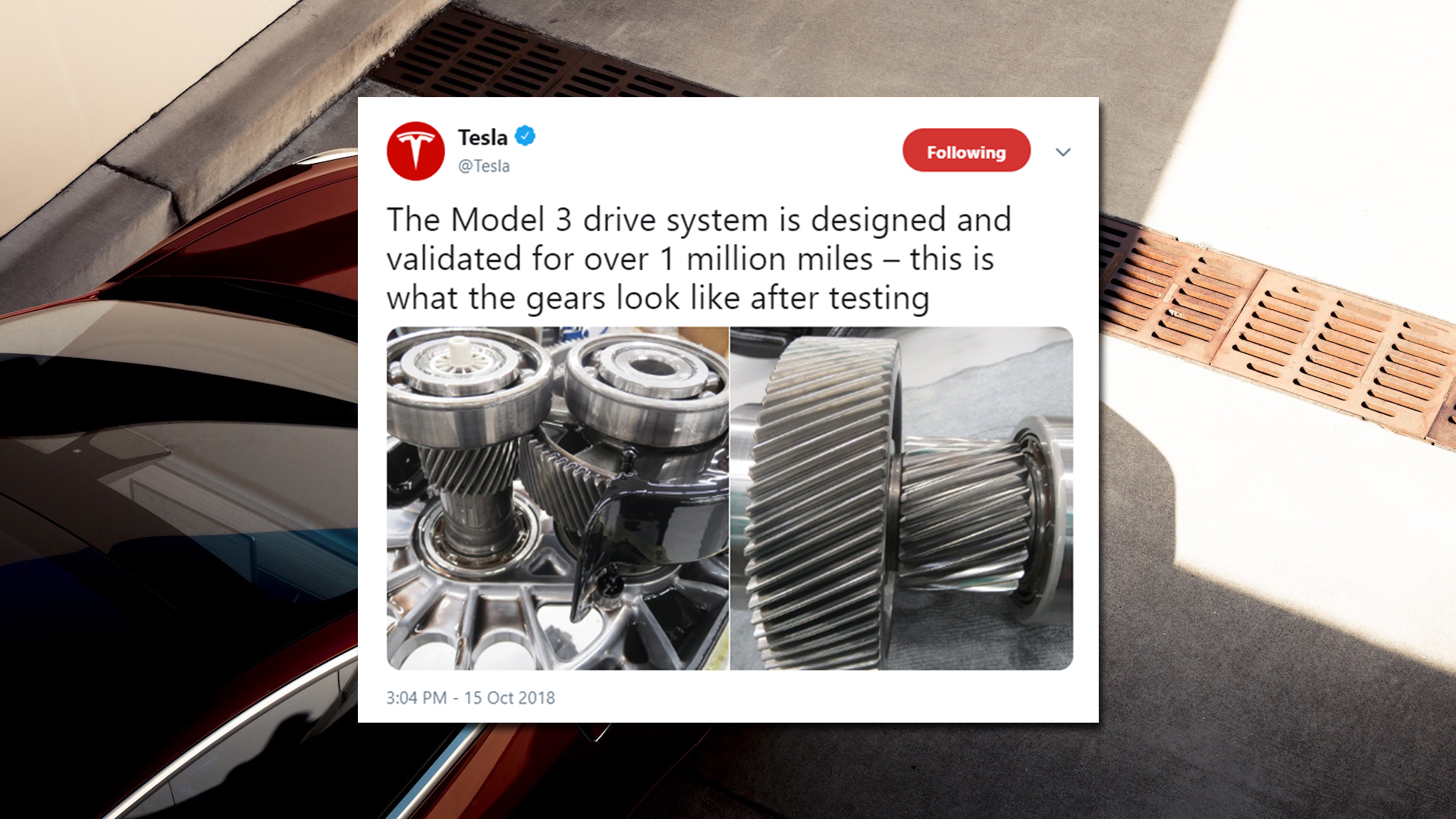

Tesla CEO Elon Musk tweeted several photos of a Model 3’s drive unit on Tuesday morning, which appear to show a motor and gearbox that have driven over one million miles. The tweet claimed that these parts were designed for “ultra high endurance.”
Prior to the Model 3 being available to purchase, Musk discussed the company’s goals for the Model 3, one of which was for the drive unit to simply “never wear out” under normal use. Specifically, Musk called out a goal of one million miles, the same number which the posted drive unit is said to have driven.
“Basically we want drive units that just never wear out. That’s our goal. And I think we’ve made really good progress in that direction,” said Musk during a 2015 quarterly earnings call. He later continued, “I mean, internally, our goal – we changed the goal of the drive unit endurance from being approximately 200,000 miles to being one million miles.”
Tesla’s upcoming Semi is said to use a plethora of Model 3 motors in its makeup, meaning that similar longevity may be expected from the commercial vehicle as well. Previously, Tesla said that the Semi would be covered by a million-mile drivetrain breakdown warranty. The Model 3’s drive unit warranty is valid for 8 years and 100,000 miles when equipped with a standard-range battery (or 120,000 miles if the optional long-range battery is purchased).
Electric vehicles as a whole have earned a notoriety for being extremely reliable due to the lack of moving parts when compared to a traditional internal combustion engine. The lack of a multi-geared transmission also helps to reduce wear items and ensure longevity on parts that help put the power down to the road. Though additional concerns have arisen surrounding long-term battery life, but high-mileage torture tests have helped to debunk the fears. In fact, Tesla’s batteries have retained over 80 percent of charging capacity over 420,000 miles in some findings.
Although the expectation of a breakdown-free vehicle is not feasible by today’s standards, the combination of mechanical part reliability coupled with battery longevity has helped to show advantages over most modern vehicles on the road today, so as long as one is willing to stomach the higher initial cost.